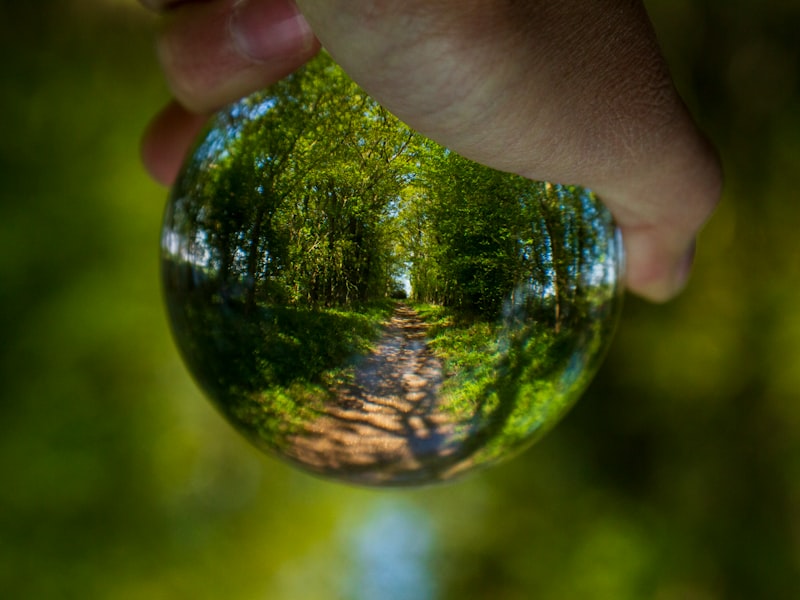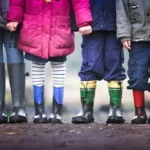- Childhood dreams hold powerful symbolic meanings, reflecting a child’s emotions, thoughts, and experiences as they navigate through new situations and emotions.
- Dreams involving children can represent the inner child archetype, symbolizing creativity, spontaneity, and a playful attitude towards life.
- Common symbols in childhood dreams include animals, water, flying, falling, and monsters or villains, all of which have deeper metaphorical meanings beyond their literal interpretations.
- Nurturing children’s dreams involves actively listening, encouraging creativity and dialogue, and creating a dream journal to help children explore and understand the meanings behind their dreams.
Hey there! Have you ever wondered what your dreams about children mean? Well, today we’re going to dive into the fascinating world of childhood dreams and explore the symbolism behind them. Understanding these dreams can provide valuable insights into our emotions, experiences, and personal growth. Let’s get started!
Understanding Childhood Dreams

Dreams are a fascinating part of our lives, and they play a significant role in shaping our experiences and perceptions. When it comes to childhood dreams, they hold a unique place in our subconscious minds and have powerful symbolic meanings. In this section, we will explore the definition and overview of childhood dreams, as well as the role of our subconscious in shaping these dreams.
1. Definition and Overview of Childhood Dreams
Childhood dreams are the vivid and imaginative experiences that children have while they sleep. They often involve fantastical scenarios, familiar people and places, and powerful emotions. These dreams can range from delightful and exciting to frightening and confusing. For children, dreams are a means of processing their daily experiences, emotions, and thoughts. They provide an outlet for their growing minds to explore and make sense of the world around [1] them.
2. The Role of our Subconscious
Our subconscious mind plays a crucial role in shaping our dreams, including childhood dreams. It is the reservoir of our deep-seated emotions, fears, desires, and memories. In childhood, our subconscious mind is highly active as we navigate through new experiences and emotions. These experiences and emotions find expression in our dreams.
Children’s dreams often reflect their developing sense of self, their relationships with family and friends, their fears and anxieties, and their aspirations for the future. Dreams allow children to explore these inner landscapes in a safe and imaginative way.
3. Exploring Symbolism in Childhood Dreams
Childhood dreams are rich in symbolism. They often contain metaphors and images that represent deeper meanings beyond the literal interpretation. Understanding the symbolism in childhood dreams can provide valuable insights into a child’s emotions, thoughts, and experiences.
Here are some common symbols that may appear in childhood dreams and their possible meanings:
- Animals
Animals can represent various qualities or instincts. For example, a dream about a lion may symbolize courage or assertiveness, while a dream about a bird may represent freedom or a desire for exploration. - Water
Water often symbolizes emotions and our emotional state. Calm, clear water may indicate a sense of peace and emotional stability, while rough or murky water may suggest turmoil or emotional challenges. - Flying
Flying in a dream is often associated with feelings of freedom, empowerment, and the ability to rise above challenges. It may reflect a child’s desire for independence or the exploration of new possibilities. - Falling
Falling in a dream can be associated with feelings of insecurity or a fear of losing control. It may indicate a need for support or protection from caregivers. - Monsters or villains
Dreams featuring monsters or villains may symbolize fears or anxieties that a child is facing. These dreams can provide an opportunity for children to confront and overcome their fears in a safe and controlled environment.
It’s important to note that the interpretation of symbols in childhood dreams should consider the unique experiences and emotions of each child. A skilled adult can help guide the child in exploring the meaning behind their dreams while being respectful of their perspective.
4. Nurturing Children’s Dreams
Nurturing children’s dreams involves creating a supportive and safe space for them to explore and express themselves. Here are some practices that can help in understanding and nurturing children’s dreams:
- Actively listen
Take the time to listen attentively when your child wants to share their dreams. Show genuine interest, ask open-ended questions, and encourage them to express their thoughts and emotions. - Encourage creativity
Provide opportunities for your child to engage in imaginative play and creative activities related to their dreams. This can include drawing, painting, storytelling, or even acting out scenes from their dreams. These activities allow children to further explore and understand their dreams. - Foster dialogue
Engage in meaningful conversations with your child about their dreams. Encourage them to think about different scenarios and possible meanings in their dreams. This helps children develop critical thinking skills and a deeper understanding of their own emotions and experiences. - Create a dream journal
Encourage your child to keep a dream journal where they can record and reflect on their dreams. This can help them develop a habit of paying attention to their dreams and exploring their deeper meanings over time.
By nurturing children’s dreams, we provide them with the tools to understand and appreciate their inner worlds. This, in turn, contributes to their emotional growth, self-awareness, and overall well-being.
Table: Common Symbols in Childhood Dreams
| Symbol | Possible Meaning |
|---|---|
| Animals | Representation of instincts or qualities |
| Water | Symbolism of emotions |
| Flying | Desire for freedom and empowerment |
| Falling | Insecurity or fear of losing control |
| Monsters or villains | Confronting fears or anxieties |
Analysis of Symbolism in Childhood Dreams

Dreams containing babies and children often hold deep symbolic meaning. These dreams can provide insights into our subconscious thoughts, desires, and emotions. In this section, we will explore various aspects of symbolism in childhood dreams, including the concept of the inner child, the meaning of babies and children in dreams, archetypes and older fictional characters, and more.
1. The Inner Child in Dream Analysis
The concept of the inner child is often associated with dreams of babies and children. It represents the innocent, playful, and authentic part of ourselves that remains untouched by the responsibilities and burdens of adulthood. Dreams featuring babies and children can serve as a reminder to reconnect with this aspect of ourselves.
In dream analysis, the inner child can symbolize creativity, spontaneity, curiosity, and joy. It represents our untamed imagination and our ability to approach life with wonder. These dreams may suggest that we need to embrace a more carefree and playful attitude in our waking lives.
2. The Meaning of Babies and Children
Babies and children in dreams are often connected to the idea of creation and nurturing. They symbolize new ideas, projects, or aspects of ourselves that need care and attention for them to grow and flourish. The age of the baby or child in the dream can provide valuable clues about when these ideas or projects were conceived.
Dreaming of your own children or children you know can also reflect the need to care for and nurture yourself. It reminds us that it is important to prioritize self-care alongside taking care of others. These dreams may also provide new insights into our relationships with our own children or children in general.
3. Archetypes and Older Fictional Characters
Dreams involving children can also tap into archetypal symbols and characters. Archetypes are universal symbols or themes deeply rooted in human consciousness. They represent fundamental human experiences and collective knowledge.
Sometimes, older fictional characters may appear in dreams as representations of our own inner child or aspects of our psyche. These characters, such as Peter Pan or Alice in Wonderland, embody the qualities of youth, imagination, and a desire for adventure and exploration. Their presence in dreams can invite us to reconnect with these qualities in our waking lives.
4. Other Symbolic Meanings in Childhood Dreams
- Awe and Wonder
Dreams of babies and children can evoke a sense of awe and wonder. They may reflect our ability to look at life through fresh eyes and see the world with curiosity and exploration. - Vulnerability and Nurturing
Babies symbolize vulnerability and the need for care and nurturing. These dreams may signify areas in our lives where we or others feel vulnerable or the need to provide emotional support. - Kindness and Self-Care
Dreams of babies can also symbolize the importance of self-care and being gentle with ourselves. They remind us to prioritize our well-being, just as we would care for a child. - Letting Go and Growth
Dreaming of babies can also represent the need to let go of something old or precious to make room for growth and new experiences in life. It may be a call to embrace change and transformation. - Nightmarish Scenarios
Nightmares involving babies or children can indicate unresolved fears, insecurities, or trauma from childhood. These dreams may prompt us to confront and heal these wounds.
Remember that the symbolism in childhood dreams is unique to each individual, and personal associations play a significant role in their interpretation. It is essential to consider the context, emotions, and personal experiences surrounding the dream to gain a deeper understanding.
Frequently Occurring Childhood Dream Scenarios

Dreams have always fascinated us, and they hold a special significance when it comes to the dreams of children. Children are naturally imaginative and curious, and their dreams often reflect their inner world and emotions. In this section, we will explore some frequently occurring childhood dream scenarios and their symbolic meanings.
1. Common Themes in Dreams Involving Children
Children often have dreams that revolve around certain themes. These dreams can provide valuable insights into their emotions, fears, and desires. Here are some common themes in dreams involving children:
- Monsters
Many children dream about monsters. These dreams often symbolize a sense of fear and insecurity. The monster represents something that the child is afraid of or feels threatened by in their waking life. It could be a difficult situation, a challenging relationship, or even their own fears and insecurities. - Flying
Another common theme in children’s dreams is flying. Flying symbolizes a desire for freedom and escape from everyday problems or limitations. It represents the child’s need for autonomy and independence. - Animals
Dreams featuring animals can have different meanings depending on the animal involved. Domestic animals often represent feelings of comfort, protection, and companionship. Insects like flies may symbolize annoyance or discomfort, while butterflies can signify happiness and good fortune. - Falls
Dreams about falling are quite common among children. Falling symbolizes a fear of failure or losing control. It can also indicate a sense of insecurity or uncertainty in the child’s life. However, if the child is able to get up and continue walking in the dream, it can be a positive sign of resilience and learning from mistakes. - Being Chased
Being chased by someone or something in a dream can be quite distressing for a child. It often symbolizes a feeling of being threatened or pursued by a problem or conflict in their waking life. The chase represents the child’s attempt to escape or avoid the source of their fear or discomfort. - Friendship
Dreams about friends and typical daily activities are common among children. These dreams reflect the child’s emotions and concerns in their everyday life. Seeing a friend in a dream can provide a sense of comfort, security, and happiness.
2. Interpreting Childhood Nightmares
Children sometimes experience nightmares that can be quite intense and scary. These nightmares can stem from fears, anxieties, or even traumatic experiences. Here are some tips for interpreting childhood nightmares:
- Listen and Validate
When your child has a nightmare, it is important to listen to their fears and concerns without dismissing or trivializing them. Validate their feelings and provide reassurance that they are safe. - Identify Triggers
Try to identify any possible triggers for the nightmares. It could be a recent experience, a movie or book they watched or read, or even something happening in their environment. Identifying the trigger can help address the underlying fear or anxiety. - Offer Comfort
Provide comfort and support to your child after a nightmare. Assure them that it was just a dream and that they are safe. Stay with them until they feel calm and help them go back to sleep if needed. - Encourage Expression
Encourage your child to express their fears and emotions through drawing, writing, or storytelling. This can help them process their feelings and gain a sense of control over their dreams.
3. Dreams About One’s Own Childhood or Childhood Home
Children may also dream about their own childhood or childhood home, even if they are currently living in a different place. These dreams can evoke a sense of nostalgia or reveal unresolved emotions from the past. Here are some possible interpretations:
- Yearning for Security
Dreams about one’s childhood home often symbolize a deep longing for security and familiarity. The child may be facing changes or challenges in their current life, and the dream reflects their need for stability and comfort. - Reconnecting with the Past
Dreams about one’s own childhood can be an opportunity to revisit and reconnect with past experiences and emotions. It may be a way for the child to process unresolved issues or heal old wounds. - Changing Perspectives
Dreams about one’s childhood can also indicate a shift in perspective or a desire for personal growth. The child may be reflecting on their journey from childhood to adolescence or exploring new aspects of their identity. - Embracing Memories
Dreams about one’s childhood can evoke positive memories and a sense of happiness and joy. The child may be celebrating the simple pleasures of their past and appreciating the experiences that have shaped them.
Cultural, Religious, and Psychological Perspectives

Dreams have always held a special place in human culture, and the symbolism surrounding dreams involving children is no exception. From ancient civilizations to modern societies, dreams of children have held both cultural and psychological significance. In this section, we will explore the different ways in which childhood dreams have been interpreted across various cultures, the psychological perspective on childhood dreams through the lens of Carl Jung, and the religious interpretations of children in dreams.
1. Cultural Perspectives: How Different Cultures Interpret Dreams of Children
Children are often seen as a symbol of innocence, purity, and potential in many cultures around the world. Dreams involving children are believed to hold special meaning and offer guidance or insight into various aspects of life.
Let’s take a closer look at how different cultures interpret dreams of children:
- Ancient Egypt
In ancient Egyptian culture, dreams of children were seen as a positive omen representing fertility, prosperity, and new beginnings. Such dreams were believed to be messages from the gods, guiding individuals towards a fruitful and abundant future. - Native American Traditions
Native American cultures often view dreams of children as auspicious signs. These dreams are seen as messages from ancestors or spirit guides, indicating blessings, protection, or the need for nurturing and care. - Chinese Culture
In Chinese culture, dreams involving children are associated with happiness, joy, and good luck. Such dreams are believed to be an indication of harmony within one’s family or a promising future filled with success and prosperity. - African Traditions
In many African traditions, dreams involving children are seen as a reflection of ancestral spirits communicating with the dreamer. These dreams may carry specific messages such as the need for family unity or the importance of preserving cultural traditions. - European Folklore
Throughout European folklore, dreams of children are often seen as a symbol of creativity, new beginnings, and the fulfillment of desires. Such dreams are thought to represent untapped potential and the emergence of fresh ideas or opportunities.
These cultural interpretations of childhood dreams highlight the universal significance and symbolism associated with dreams involving children. Across cultures, dreams of children carry a positive connotation, representing hope, potential, and the manifestation of positive outcomes.
2. The Psychological Perspective: Carl Jung’s Interpretation
From a psychological standpoint, dreams involving children hold a special significance in the framework developed by Swiss psychiatrist Carl Jung. According to Jungian psychology, dreams are a reflection of the unconscious mind and contain symbols that represent various aspects of the dreamer’s psyche.
Jung believed that dreams involving children symbolize the archetype of “the Child” within us – the pure, innocent, and creative aspects of our personality. The Child archetype represents our untapped potential, spontaneity, and sense of wonder.
Childhood dreams are seen as a reminder to reconnect with these qualities and embrace our inner child. They may indicate a need for playfulness, creativity, or a desire to explore new possibilities in life. Alternatively, dreams of children may also signify unresolved emotional issues or unmet needs from one’s own childhood.
Through an exploration of childhood dreams, individuals can gain insight into their personal growth, emotional healing, and the integration of different aspects of their personality.
3. Religious Interpretations of Children in Dreams
Religious traditions often ascribe spiritual significance to dreams involving children. In various religious texts and beliefs, children are seen as symbols of purity, innocence, and divine blessings.
Here are some examples of religious interpretations of children in dreams:
- Christianity
In Christianity, dreams involving children are associated with the concept of rebirth and spiritual growth. Such dreams may represent the need for inner transformation or the birth of new spiritual insights. - Islamic Beliefs
In Islamic beliefs, dreams involving children are often seen as a sign of divine favor and blessings. These dreams may indicate the fulfillment of desires, the arrival of good news, or the coming of a spiritually significant event or person. - Buddhism
In Buddhism, dreams involving children are regarded as reminders of the impermanence of life and the karmic cycle. Such dreams may suggest a need for compassion, nurturing, and the understanding of interconnectedness. - Hinduism
In Hinduism, dreams involving children are seen as representations of various deities associated with fertility, creation, and protection. Such dreams may indicate divine intervention or the blessings of a specific deity.
Religious interpretations of children in dreams highlight the spiritual significance associated with these dream symbols. They provide individuals with guidance, reassurance, or reminders of their faith and connection to the divine.
Extending the Learnings from Childhood Dreams

Childhood dreams have a profound impact on our lives, shaping our desires, aspirations, and goals. They are a reflection of our innermost thoughts and emotions, and they carry symbolic meanings that can provide valuable insights into our personal growth and healing journey. In this section, we will explore how to extend the learnings from childhood dreams to enhance our lives and achieve a deeper understanding of ourselves.
1. Dreams for Personal Growth and Healing
Childhood dreams often contain hidden messages that can guide us towards personal growth and healing. By analyzing these dreams, we can uncover unresolved issues from our past and gain valuable insights into our current emotional state.
- Analyzing Emotions
Pay attention to the emotions evoked by your childhood dreams. Are you feeling scared, anxious, or happy? These emotions can give you clues about areas in your life that need healing or attention. For example, a recurring dream about being chased may indicate unresolved fears or anxieties that you need to address. - Identifying Patterns
Notice any recurring themes or symbols in your childhood dreams. These patterns can reveal underlying beliefs or experiences that have shaped your worldview. For instance, if you often dream about being lost or abandoned, it may suggest feelings of insecurity or a need for emotional support. - Seeking Resolution
Use your childhood dreams as an opportunity for self-reflection and introspection. What unresolved issues or traumas from your past do they bring to the surface? By acknowledging and addressing these issues, you can work towards healing and personal growth.
2. Emotion, Trust, and the Need for Security
Children are naturally trusting and open-minded, and their dreams reflect this innocent and curious nature. As we grow older, we may lose touch with these qualities, but by analyzing childhood dreams, we can regain a sense of emotional security and trust in ourselves.
- Exploring Emotions
Childhood dreams often evoke strong emotions, reminding us of the joy, wonder, and excitement we experienced as children. Pay attention to these emotions and try to reconnect with the feelings of innocence and curiosity that they represent. - Building Trust
Analyzing childhood dreams can help us regain trust in ourselves and our abilities. By uncovering the limiting beliefs or doubts that may have formed during our childhood, we can challenge them and work towards building self-confidence and self-trust. - Seeking Security
Childhood dreams may also reveal a need for emotional security and a sense of belonging. If you often dream about being lost or searching for something, it may indicate a deep longing for stability and connection. Use these dreams as a reminder to nurture yourself and cultivate healthy relationships.
3. Regaining Innocence, Curiosity & Creativity through Dream Analysis
Childhood dreams are filled with playfulness, imagination, and creativity. By analyzing these dreams, we can tap into our own sense of wonder and reconnect with our innate curiosity and creative potential.
- Embracing Playfulness
Childhood dreams remind us to embrace our playful side and find joy in simple pleasures. Use these dreams as an invitation to incorporate more playfulness into your daily life, whether through hobbies, creative pursuits, or spending time with loved ones. - Cultivating Curiosity
Analyzing childhood dreams can awaken our natural sense of curiosity and encourage us to explore new ideas and possibilities. Use these dreams as a catalyst for learning and personal growth, embracing new experiences and expanding your horizons. - Unlocking Creativity
Childhood dreams are often filled with imaginative scenarios and creative solutions. By tapping into these dreams, you can unlock your own creative potential and find innovative approaches to challenges in your life. Take inspiration from your childhood dreams and use them as a source of creativity in your everyday endeavors.
Conclusion
In nurturing children’s dreams, it is essential to remember that dreams can serve as powerful tools for self-discovery and exploration. By actively listening to children’s dream narratives, we can provide a safe space for them to share their emotions and experiences. Encouraging creativity through drawing or writing exercises can help them delve deeper into the symbolism within their dreams. By keeping a dream journal, children can track recurring symbols or themes over time and gain a richer understanding of their own inner world. As adults, we have the responsibility to guide and support children as they navigate through the vast landscape of their dreams, helping them unlock the profound wisdom and insights held within each nighttime adventure.










Leave a Reply